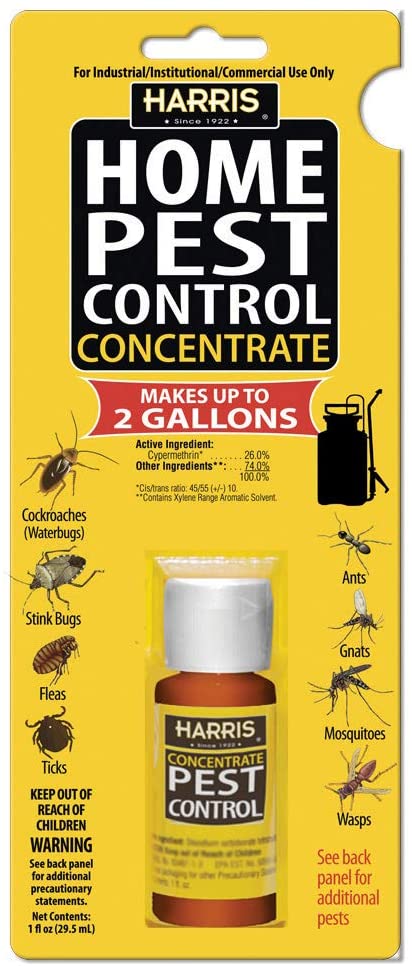A1 Commercial Pest Control Portland - Reliable Bed Bug Solutions for Businesses
A1 Commercial Pest Control Portland - Reliable Bed Bug Solutions for Businesses
Blog Article
Effective Parasite Control Providers: A Thorough Appearance at Extermination Techniques and Prevention Procedures
In the realm of parasite control services, the effective monitoring of problems calls for a meticulous approach that integrates various methods and measures for both removal and prevention. From Integrated Insect Monitoring (IPM) methods that prioritize sustainable services to chemical elimination strategies made for targeted elimination, the arsenal versus bugs is large and complex.

Integrated Insect Management (IPM) Strategies
Integrated Pest Management (IPM) Approaches incorporate a thorough technique to pest control that concentrates on control, surveillance, and avoidance techniques to effectively take care of bug populaces. By incorporating numerous strategies, IPM intends to lessen the effect of bugs while also lowering the reliance on chemical pesticides. Avoidance exists at the core of IPM, stressing practices like correct hygiene, upkeep of health, and securing entrance points to prevent pests from infesting buildings. Tracking plays a vital duty in IPM by consistently identifying and examining parasite degrees to figure out the proper treatment thresholds. Control methods in IPM focus on the usage of physical, organic, and social techniques prior to turning to chemical treatments as a last resource. These methods include presenting natural killers, environment alteration, and utilizing trapping devices to keep bug populaces in check. Generally, IPM cultivates a environmentally conscious and sustainable technique to pest management, advertising long-lasting remedies that protect both human health and the environment.
Chemical Extermination Techniques
Chemical extermination methods are frequently employed in bug control services to efficiently get rid of pest populaces that pose a risk to human health and wellness and residential property. These techniques entail the usage of different chemical substances specifically developed to target and remove bugs such as pests, rats, and other unwanted creatures. The application of pesticides, pesticides, rodenticides, and various other chemical agents is meticulously controlled to guarantee maximum performance while lessening threats to humans, animals, and the atmosphere.
One of the crucial benefits of chemical elimination techniques is their capability to supply quick and targeted outcomes, making them particularly beneficial in instances of serious infestations or immediate insect control demands - a1 pest control in portland oregon bed bugs. Nevertheless, it is important to highlight the importance of correct handling, application, and disposal of these chemical items to protect against unintentional injury
Additionally, integrated bug administration (IPM) approaches frequently combine chemical extermination methods with other approaches such as sanitation, environment modification, and biological controls to develop a lasting and extensive insect control technique. By including chemical elimination techniques sensibly within an IPM framework, parasite control solutions can efficiently manage bug populations while lessening potential risks to human health and the atmosphere.
Biological Pest Control Methods
Employing all-natural predators and bloodsuckers to handle insect populations is a sustainable approach understood as biological pest control. a1 residential pest control portland or bed bugs. One common biological control method involves presenting all-natural adversaries of the target parasite types, such as ladybugs for aphid control or nematodes for termite invasions.
One more effective organic control approach is using microbial insecticides. These are normally taking place microorganisms, such as germs, infections, and fungi, that especially target and infect certain bug varieties. By utilizing these microbial representatives, pest populations can be effectively decreased without creating or damaging valuable microorganisms injury to the environment.
Physical Parasite Avoidance Steps
Applying physical insect avoidance steps entails making use of obstacles and structural adjustments to prevent bugs from infesting a residential or commercial property or going into (a1 portland bed bug exterminator). One effective approach is sealing all potential entry factors such as voids around doors, windows, and utility penetrations. Setting up door moves, screens on windows, and securing fractures in the foundation can assist prevent bugs like bugs and rodents from gaining gain access to inside. try this In addition, preserving a tidy and clutter-free environment is vital as parasites are brought in to food sources and concealing areas. Routinely evaluating and fixing any kind of damaged displays, vents, or roof covering ceramic tiles can likewise assist in keeping bugs out.
One more physical avoidance procedure is making use of barriers like secure fencing to keep larger pests such as raccoons or deer you can look here away from the building. Installing mesh or cord screens around yards can protect plants from being damaged by bugs. Correct waste administration, including safeguarding wastebasket with tight-fitting covers, is essential in hindering pests like bugs, raccoons, and rats. By carrying out these physical parasite avoidance measures, homeowner can substantially lower the risk of bug invasions and the damages they can create.
Professional Pest Examination Treatments
Conducting methodical and extensive parasite evaluations is a basic facet of specialist insect monitoring methods. Professional pest assessors are trained to meticulously examine residential or commercial properties for indications of problems, recognizing pest species, entry points, and helpful problems. The assessment process normally begins with a thorough assessment of both the exterior and interior of the properties. This entails checking for bug droppings, gnaw marks, nests, and any type of architectural damages that might suggest parasite task. Additionally, assessors might make use of customized devices such as moisture meters and borescopes to find hidden invasions pop over here within wall surfaces or crawl rooms.

Conclusion
Finally, efficient bug control services utilize a range of methods, consisting of Integrated Pest Administration techniques, chemical elimination methods, biological controls, and physical avoidance actions. Professional parasite inspection treatments play a crucial role in identifying and attending to pest problems in a timely way. By applying a combination of these methods, homeowner can successfully protect against and manage bug problems.
From Integrated Pest Management (IPM) strategies that prioritize sustainable services to chemical elimination methods developed for targeted elimination, the toolbox against parasites is multifaceted and substantial.Integrated Parasite Management (IPM) Techniques include an extensive approach to pest control that concentrates on surveillance, avoidance, and control techniques to efficiently handle insect populaces.Chemical elimination methods are typically used in bug control solutions to effectively eliminate parasite populaces that present a danger to human health and residential property.Employing all-natural predators and parasites to handle bug populaces is a lasting approach understood as biological insect control.In conclusion, efficient pest control services employ a selection of methods, including Integrated Pest Administration approaches, chemical extermination methods, organic controls, and physical avoidance measures.
Report this page